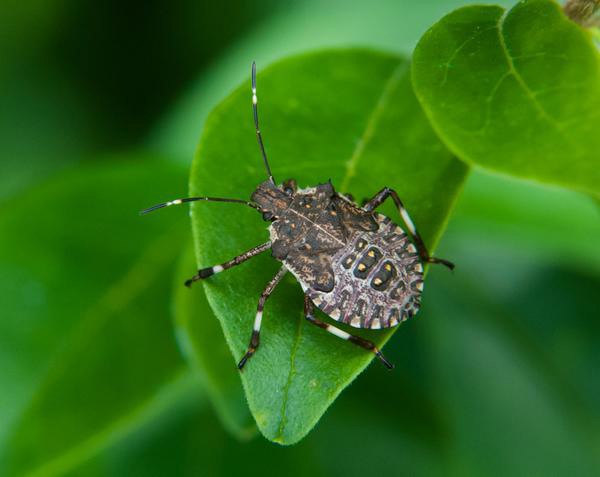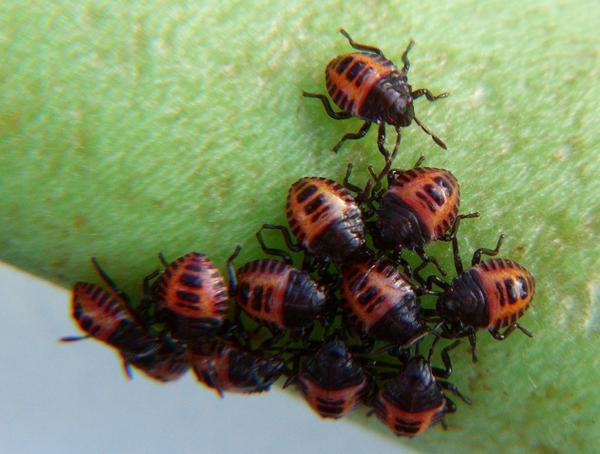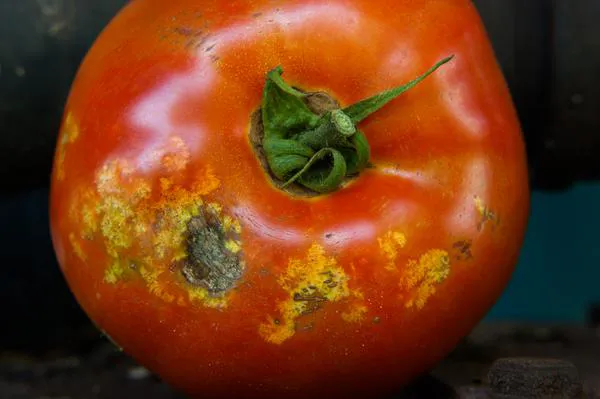The brown marmorated stink bug (Halyomorpha halys; BMSB) is an invasive pest native to eastern Asia. It was first detected in the United States in Pennsylvania in the late 1990s. Since then, BMSB has spread across the nation, increasing to large, damaging numbers throughout the mid-Atlantic region and beyond. It was first detected in North Carolina in 2009 near Winston-Salem. Initial invasions usually occur in urban or suburban settings, and by 2012 BMSB had become a locally abundant nuisance pest in structures throughout the mountains and piedmont. In some areas, home gardeners found destructive populations on tomatoes, peppers, okra, corn, beans, apples, peaches, and other host crops. By 2015, BMSB was causing damage to a variety of commercial crops, and it is now a regular pest on many farms.
As of March 2023, BMSB was confirmed present in 79 of North Carolina's 100 counties. For reasons that are not yet entirely clear, BMSB has not become well-established in the coastal plain. Some preferred wild hosts include (but are not limited to) tree-of-heaven, paulownia, catalpa, wild cherry, and black walnut.
Description
BMSB is often confused with the native brown stink bug, dusky stink bug, rough stink bug, squash bug, and other hemipterans. However, it can be distinguished easily by the whitish bands on its antennae and (in some life stages) legs. Bands on antennae are apparent in both adult and immature forms. Mature adults are approximately 5/8 inch (17mm) long after progressing through 5 nymphal instars, which range from 1/10 to 1/2 inch (2.4 to 12mm) long. Individual eggs are about 1/25 inch (1mm) in diameter (generally larger than those of native stink bugs) and are laid in masses that contain an average of 28 eggs.

Annual Life Cycle in North Carolina
BMSB overwinter in dry, confined spaces. In nature, dead trees or fallen logs serve this purpose, but if homes and other buildings are available, BMSB will aggregate in attics, garages, behind picture frames, in tarps and curtains, and in other dark spots. BMSB is the only stink bug species in NC that seeks out human-made structures as overwintering sites. In April and May, adults emerge and move into wooded areas, where they feed and reproduce. In early summer, some adults and nymphs migrate to other habitats, including agricultural fields and home gardens. Both adults and juveniles will move among crops as plants grow and mature. Soybeans, for example, have few BMSB when plants are young but become a preferred host late in the season. In mid-September and October, adults begin dispersing to overwintering sites, and on sunny days they are often seen on the outside of buildings. This is the time of year when homeowners generally experience the biggest invasions of bugs.

Damage in Agriculture
BMSB has a wide host range and potentially can become a major agricultural pest in many fruits, vegetables, and row crops. Like all stink bugs, BMSB has piercing-sucking mouth parts, and in addition to removing plant cell contents while feeding, it secretes enzymes that kill the tissue. Damage has been most commonly observed on tomatoes, peppers, okra, apples, peaches, and corn and is expressed as misshapen, discolored fruit. On some crops, such as peaches and corn, damage may not be apparent on the exterior of the fruit but is obvious when the fruit is cut open. There is also evidence that BMSB can transmit microorganisms that cause some fruits, such as pepper and tomato, to rot. Damage sometimes does not appear on the surface for up to two to three weeks after BMSB have fed.
On apples, BMSB damage can appear similar to hail damage and bitter pit spotting.

Management
Insecticides are currently the most practical option for managing BMSB in agricultural and home garden settings. Insecticides belonging to the pyrethroid and neonicotinoid classes are the most effective. Home gardeners should look for products containing the active ingredient bifenthrin, cyfluthrin, or lambda-cyhalothrin. Organic gardeners have very limited options and may need to spray frequently to target BMSB in its immature stages. Organic products like Azera (a mixture of azadiractin and pyrethrins) and Entrust (spinosad) have shown activity in research trials.
Naturally occurring biological control agents can help to reduce populations, with BMSB eggs being the stage that is most vulnerable to biological control. Native species of tiny parasitic wasps, such as Anastatus reduvii and Telenomus podisi have done little to control BMSB, but an Asian species, Trissolcus japonicus, has much more promise. T. japonicus has been discovered in thirteen states in the US (including North Carolina), presumably after being imported accidentally with BMSB. Scientists are studying ways to use it in biological control projects.
Research also aims to develop additional management strategies, including the use of trap crops, pheromones to attract stink bugs to insecticidal nets, and other cultural approaches.
For control in homes and other structures, insecticide sprays are not always effective due to the mobile nature of the stink bugs, the constant influx of new stink bugs from outside, and the difficulty of treating populations without contaminating living areas. In addition, leaving large numbers of dead BMSB inside attics or walls can lead to further infestations of unwanted pests, such as carpet beetles. A better method is to remove individuals with a vacuum as they appear in living spaces and discard them after placing them in a freezer or drowning them in a dish of soapy water. When all BMSB have left the structure in early summer, seal all entry points (torn screens, cracks and gaps in window frames, etc.) so bugs cannot return in autumn.
See the "Pest and Orchard Management Program" section of the Integrated Orchard Management Guide for Commercial Apples in the Southeast for the most current control guidelines for BMSB in apples.
